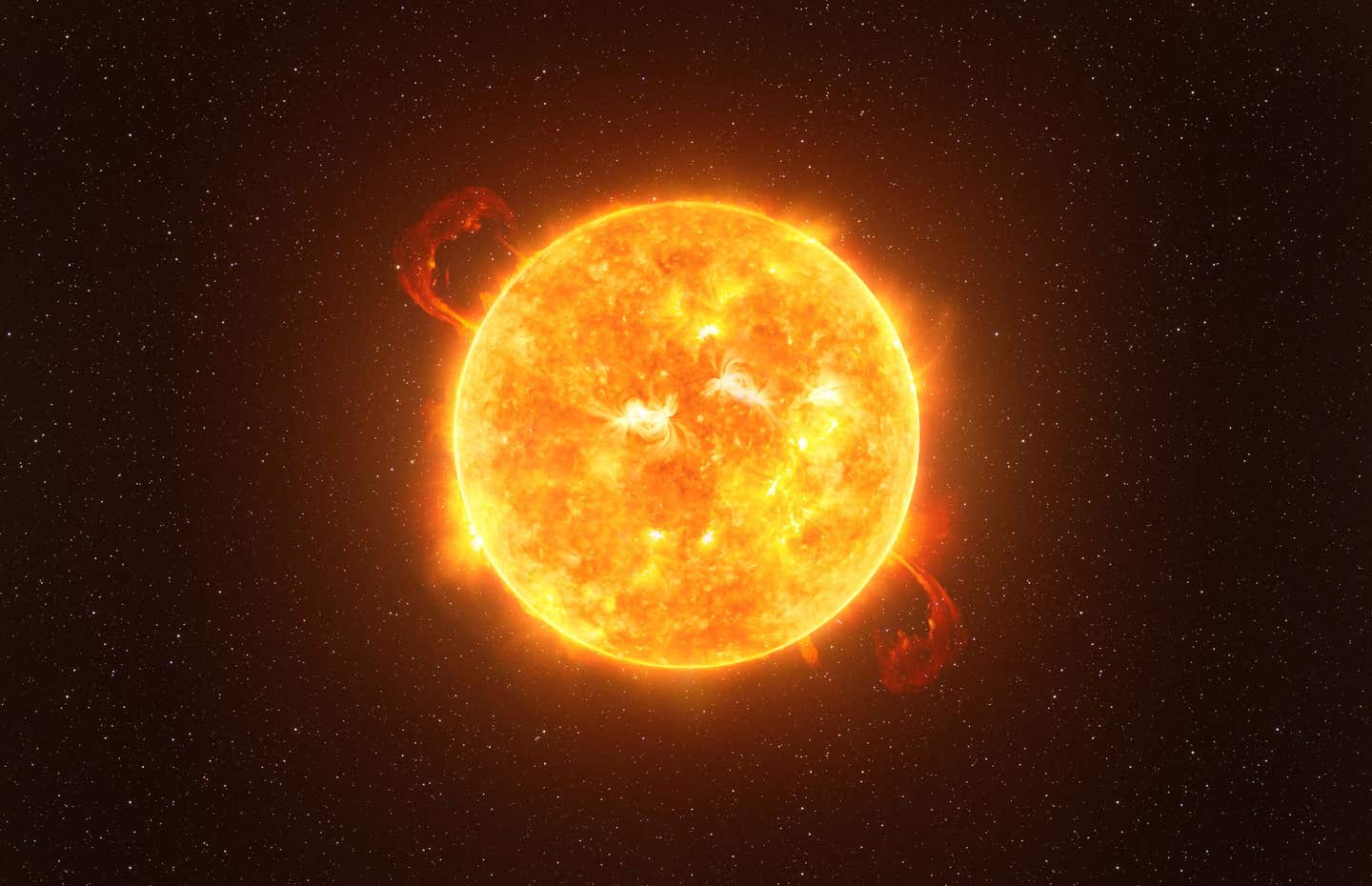Bright star Betelgeuse likely has a ‘Betelbuddy’ stellar companion
Researchers discover a hidden companion star may cause Betelgeuse’s brightness variations, shedding light on the red giant’s enigmatic behavior.

Scientists have uncovered evidence suggesting Betelgeuse’s brightness changes are caused by an unseen companion star, potentially reshaping theories on stellar dynamics. (CREDIT: CC BY-SA 4.0)
Betelgeuse, one of the most luminous stars visible from Earth, continues to surprise astronomers. The red giant’s brightness fluctuations have long intrigued scientists, but new research suggests these changes might be caused by a hidden companion star. This discovery could redefine our understanding of Betelgeuse and stars like it.
Theories about Betelgeuse’s brightness variations have puzzled researchers for decades. Recently, astronomers identified a periodic cycle of dimming and brightening, known as a Long Secondary Period (LSP), lasting roughly 2,170 days.
This cycle is five times longer than Betelgeuse’s intrinsic pulsation mode, which has a period of 416 days. The synchronicity of these cycles with observed shifts in the star’s radial velocity led researchers to hypothesize the existence of a low-mass companion, dubbed “Alpha Ori B.”
“We ruled out every intrinsic source of variability that we could think of as to why the brightening and dimming was happening in this way,” explained Jared Goldberg, the study’s lead author and a research fellow at the Flatiron Institute’s Center for Computational Astrophysics. “The only hypothesis that seemed to fit is that Betelgeuse has a companion.”
This companion—informally referred to as the “Betelbuddy”—appears to interact with Betelgeuse in fascinating ways. As it orbits the red giant, it may plow through clouds of dust expelled by the star, temporarily clearing the dust and making Betelgeuse appear brighter.
The researchers combined observational data with advanced computer simulations to explore various explanations for the LSP. Alternative hypotheses, such as internal churning of the star’s interior or fluctuations in its magnetic field, were ruled out. Goldberg and his collaborators, Meridith Joyce and László Molnár, demonstrated that the presence of a companion provided the only plausible explanation.
Betelgeuse, approximately 100,000 times as luminous as the Sun and 400 million times its volume, is nearing the end of its life. As a variable star, it pulses with a heartbeat-like rhythm. The fundamental pulsation is shorter and intrinsic to the star, while the longer cycle is external and suggests a companion’s influence.
Current calculations estimate that the Betelbuddy has a mass of 1.17 times that of the Sun and orbits Betelgeuse at a distance 2.43 times the star’s radius, equivalent to roughly 1850 solar radii. This orbital configuration matches observed variations in Betelgeuse’s light curve and radial velocity.
Related Stories
Despite the compelling evidence, questions about the companion’s nature remain. Joyce highlighted the uncertainties, noting, “It is difficult to say what the companion actually is beyond providing mass and orbital constraints. A sunlike star is the most probable type of companion, but that is by no means conclusive.”
Some researchers speculate the Betelbuddy could be a neutron star, the remnants of a supernova. This hypothesis, however, lacks corroborative evidence, such as X-ray emissions typically associated with neutron stars. Joyce added, “I think we should look again.”
The researchers aim to confirm the Betelbuddy’s existence through direct imaging. Observations with advanced telescopes might offer a window of opportunity around early December. “We’re working on observation proposals now,” Molnár said. “We need to confirm that the Betelbuddy actually exists, since our result is based on inference, not on direct detection.”
Betelgeuse has captivated astronomers for centuries. This research underscores how much there is still to learn, even about well-studied celestial objects. “Betelgeuse has been the target of countless studies since the dawn of modern astrophysics,” Molnár noted. “And yet there’s still room to make significant new discoveries.”
The discovery of a companion star offers new insights into the dynamics of massive stars nearing the end of their lives. It challenges long-standing theories about the causes of long secondary periods and the role of companions in shaping stellar behavior.
Team science played a pivotal role in this breakthrough. Joyce reflected, “Without each of us considering this problem from very different angles—László as an expert in space-based observations and data analysis, Jared as someone who studies and simulates massive stars, and myself as a 1D modeler—the work wouldn’t have been possible.”
The potential identification of the Betelbuddy could also impact predictions about Betelgeuse’s future. When the star eventually explodes as a supernova, the event will outshine the Moon and be visible during the day for weeks. Understanding Betelgeuse’s current state offers clues about when that might occur.
As researchers refine their models and seek direct evidence, the scientific community remains intrigued. New observations could settle debates about the Betelbuddy’s nature and solidify its place in the story of Betelgeuse.
For now, Betelgeuse stands as a reminder of the mysteries that even the brightest stars can hold. This research not only advances the understanding of stellar evolution but also highlights the potential for groundbreaking discoveries hiding in plain sight.
Note: Materials provided above by The Brighter Side of News. Content may be edited for style and length.
Like these kind of feel good stories? Get The Brighter Side of News' newsletter.
Joshua Shavit
Science & Technology Writer | AI and Robotics Reporter
Joshua Shavit is a Los Angeles-based science and technology writer with a passion for exploring the breakthroughs shaping the future. As a contributor to The Brighter Side of News, he focuses on positive and transformative advancements in AI, technology, physics, engineering, robotics and space science. Joshua is currently working towards a Bachelor of Science in Business Administration at the University of California, Berkeley. He combines his academic background with a talent for storytelling, making complex scientific discoveries engaging and accessible. His work highlights the innovators behind the ideas, bringing readers closer to the people driving progress.



